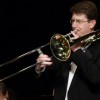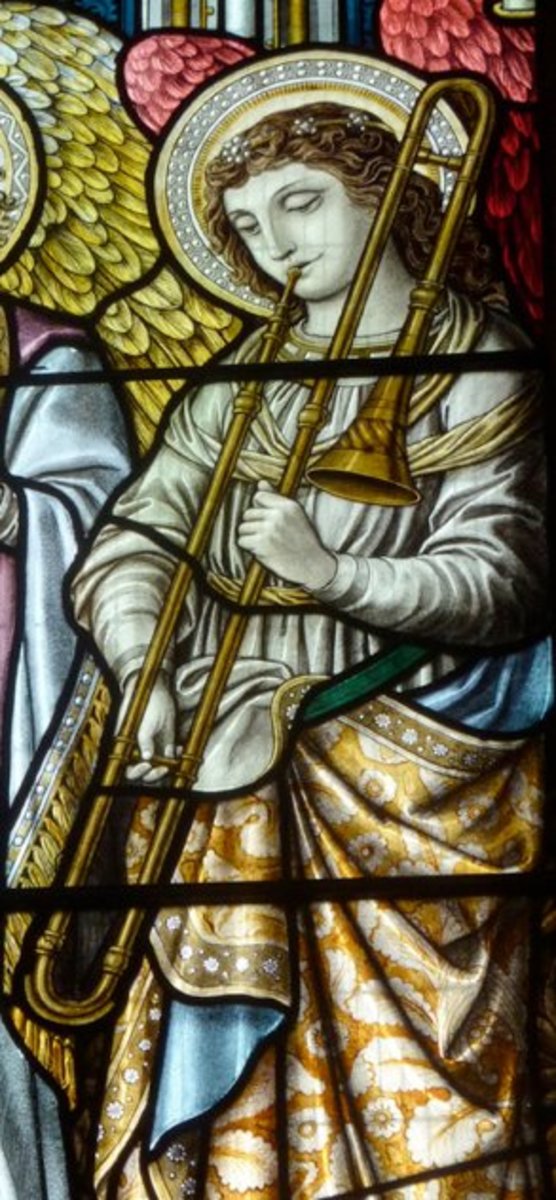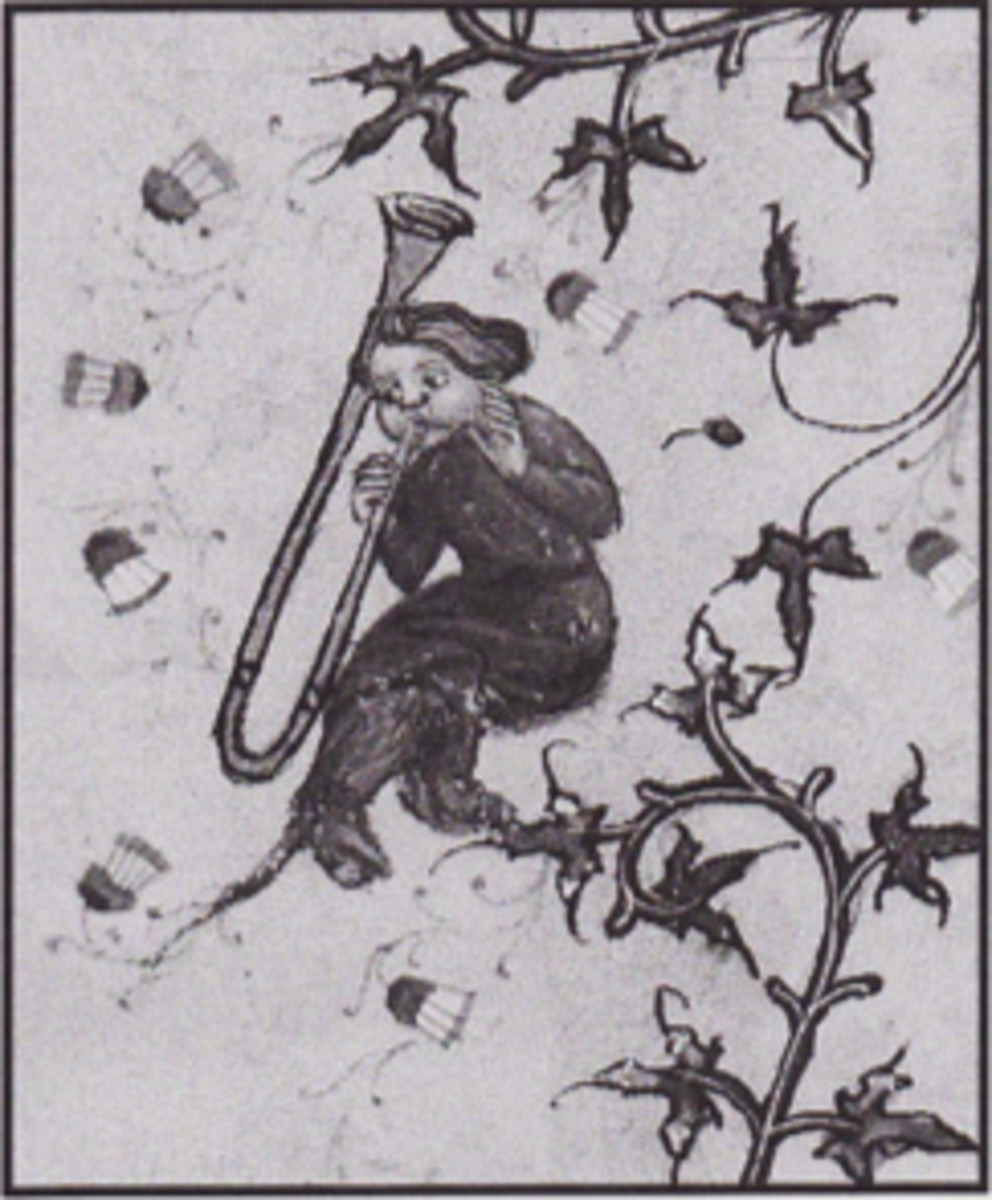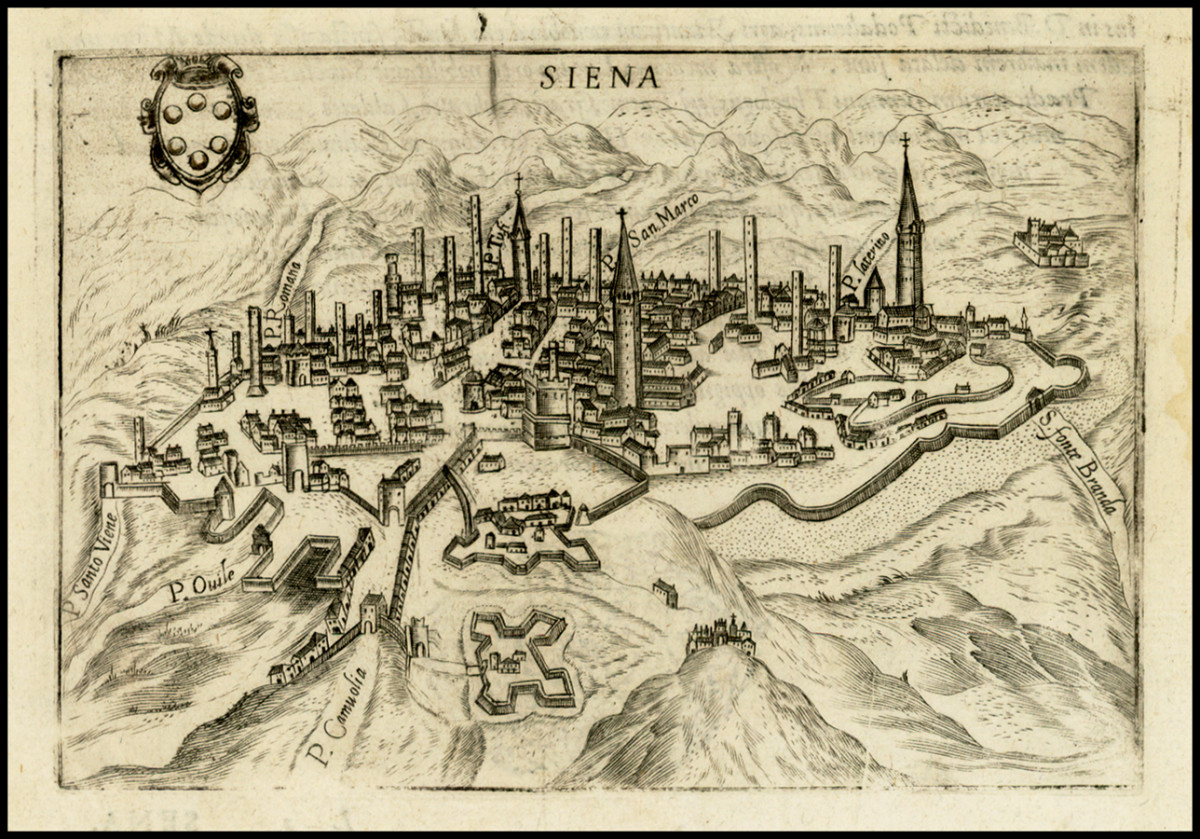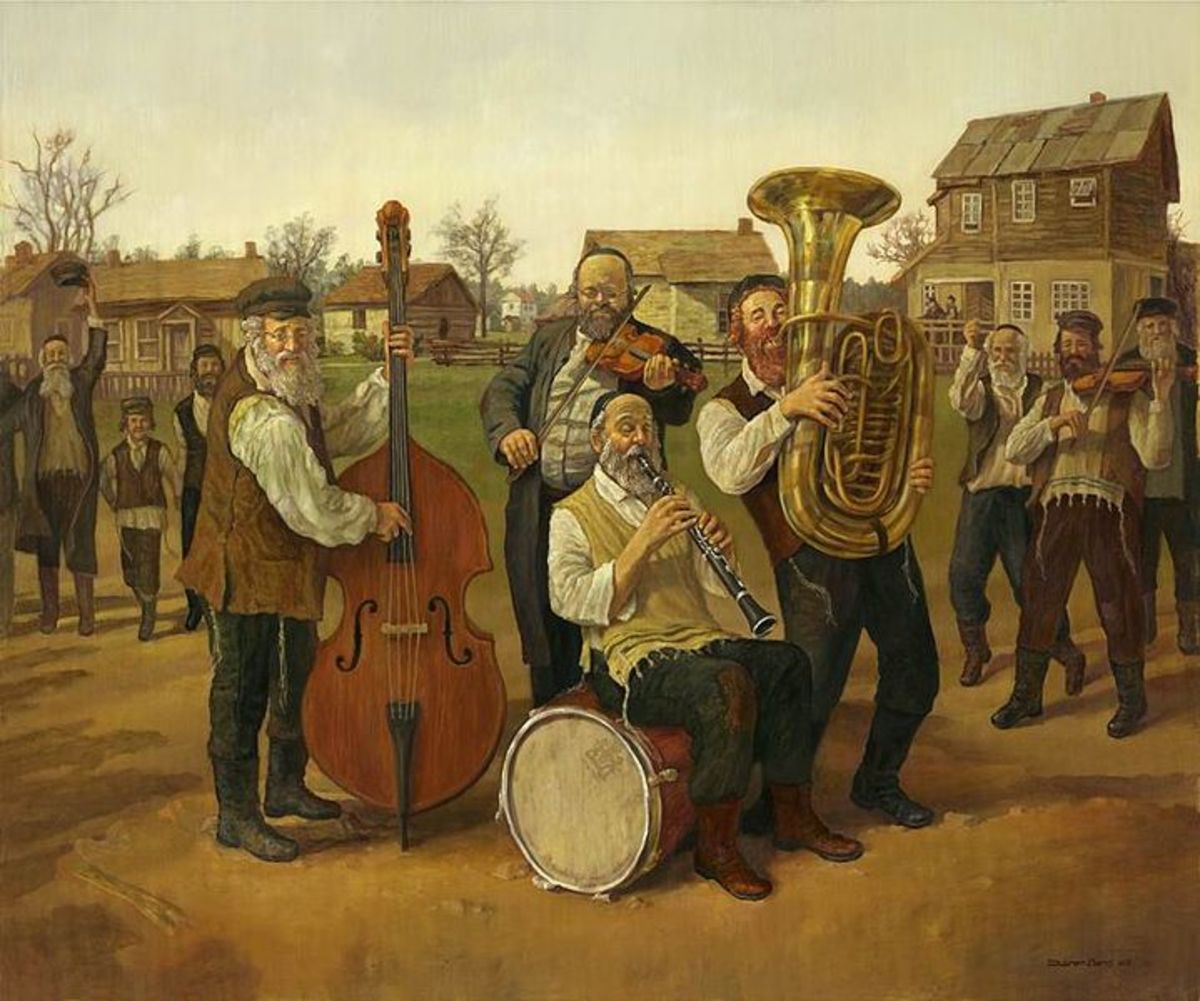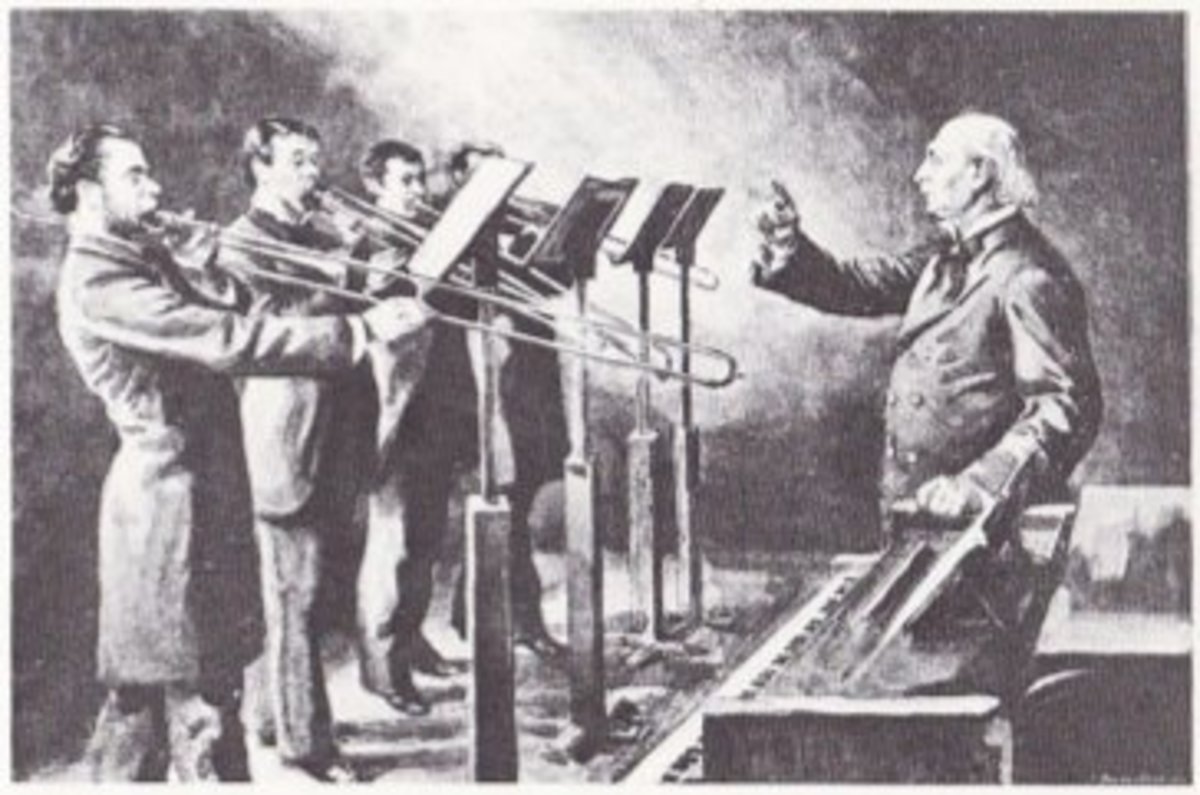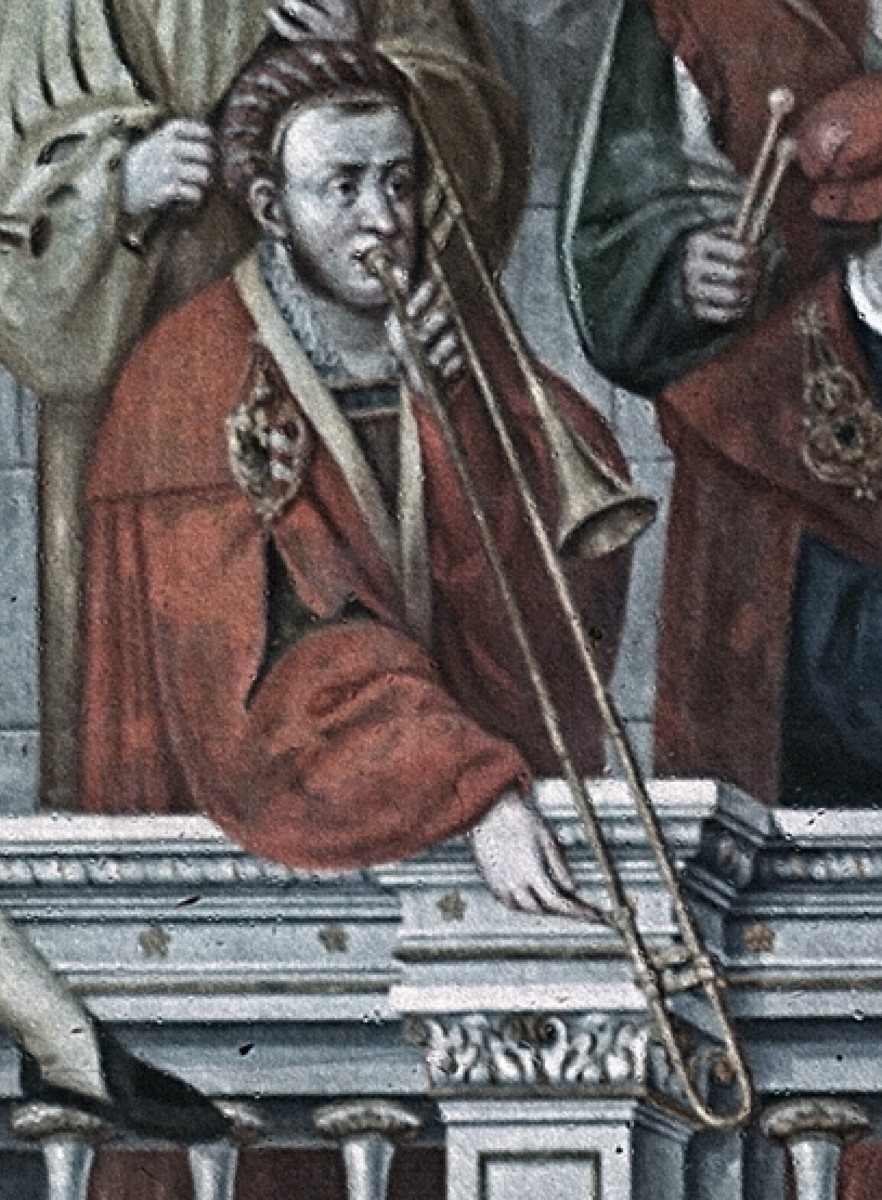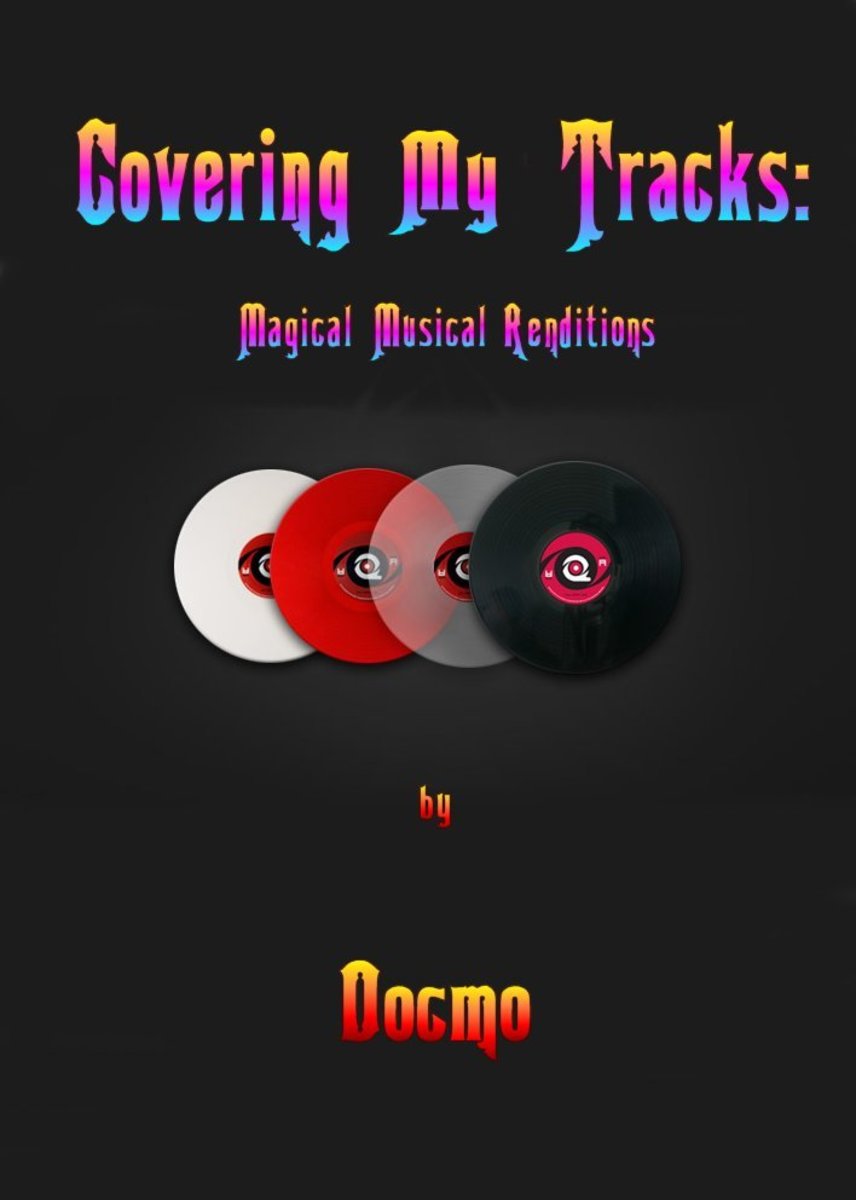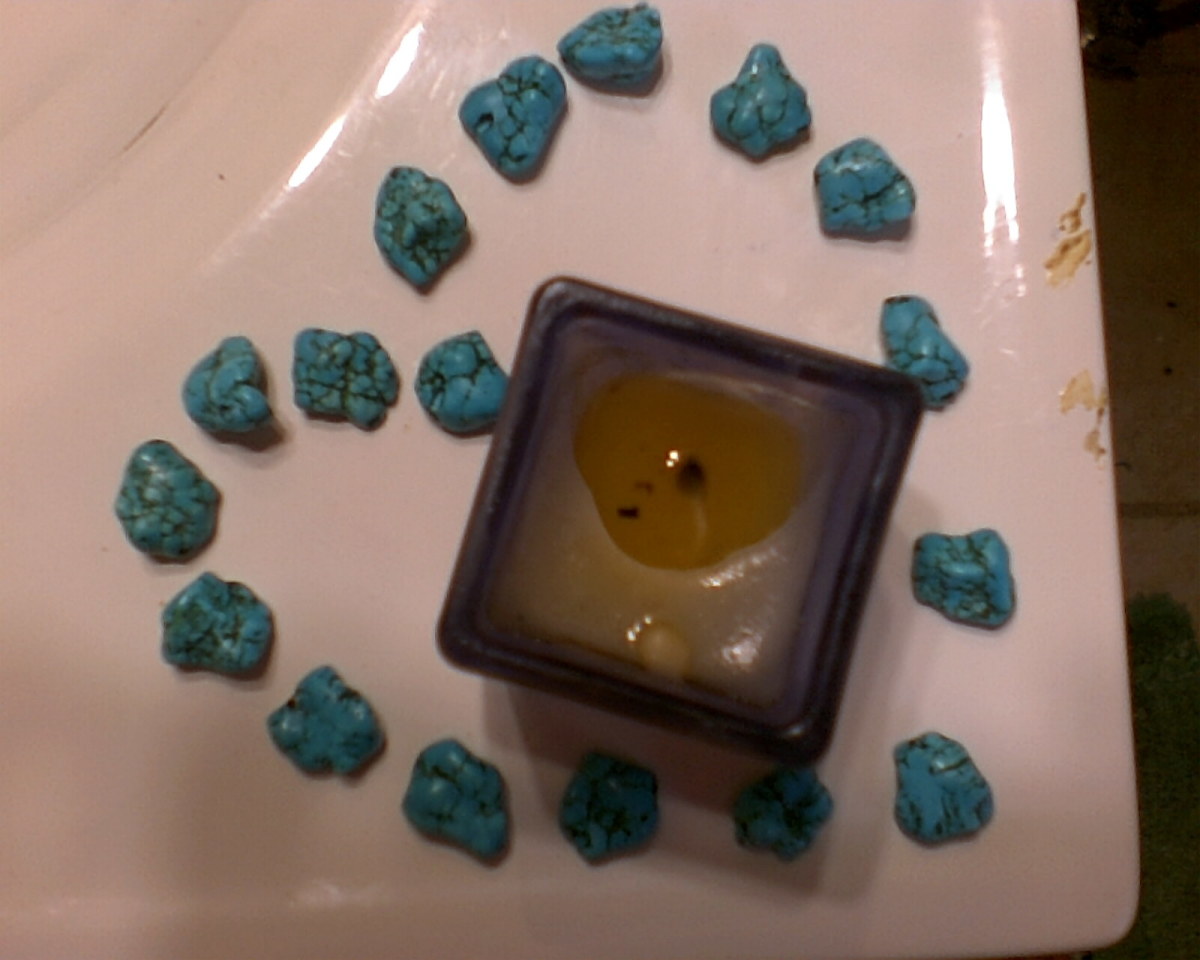Trombone History: The Trombone in Parades, 15th and 16th Centuries
Intro: I Love a Parade!
76 trombones led the big parade! When Meredith Willson penned those lyrics in 1957 for the Broadway musical The Music Man, the author was unwittingly reflecting not just a recent local tradition, but nearly 500 years of trombone history!
While few parades have actually included 76 trombones, processions of various forms have been part of the trombone's history almost continuously from near the instrument's inception in the 15th century up to the present. They include royal processions, civic processions, religious processions, and military processions.
Perhaps the most famous procession that the trombone has been involved with has been Beethoven's funeral procession (where the trombones did, in fact, lead the parade). Other highlights include Bellini's famous painting of a procession in St. Mark's square in Venice, a procession in England for Anne Boleyn's coronation, a procession at the coronation of Louis XIV in France, a painting from Peru depicting The Procession of Corpus Christi, and a 19th century military parade in Germany.
This hub, covering the 15th and 16th centuries, is the first of a two-part series detailing these processions, both in written and visual form. For the second part (17th-19th centuries), see here.
For broader historical context and full citation of sources, see the Trombone History Timeline.
The Processions
1463—Mantua, Italy: The arrival of Margaret of Bavaria is announced by an enormous musical ensemble, including a procession of 107 trumpets, shawms, and trombones (trombi, pifari, tromboni) (Kurtzman, Trombe; Atlas, Music 99).
1469—Heidelberg, Germany: A Corpus Christi procession includes bells, trombones (Pusaunen), trumpets, and shawms: “…with the bells pealing, and Pusaunen, trumpetten and many pfiffen” (Baines, Brass 108).
1478—Seville, Spain: At the baptism of Prince Juan, son of Ferdinand and Isabella, the royal chronicler records, “The prince was brought to the church in a great procession…with infinite musical instruments of various types—trumpets, shawms and trombones [sacabuches]” (Kreitner, Minstrels in Spanish Churches).
1496—Venice, Italy: In Gentile Bellini’s Procession in Piazza San Marco a lengthy procession includes a wind band with at least one trombone; a possible second trombone is in resting position (see below detail of painting) (Venice, Accademia; public domain image). A wider detail of the painting (see second image below) shows the position of the band within part of the procession–see bottom-right of image.
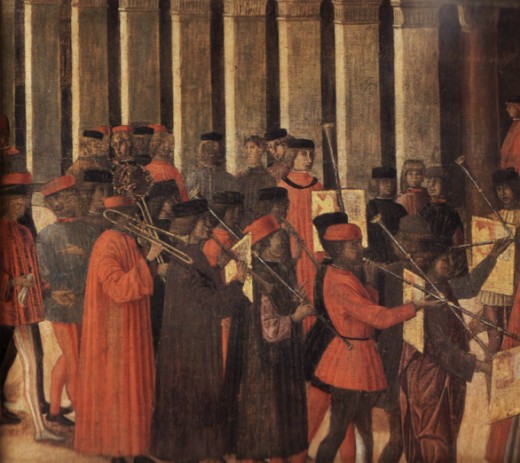
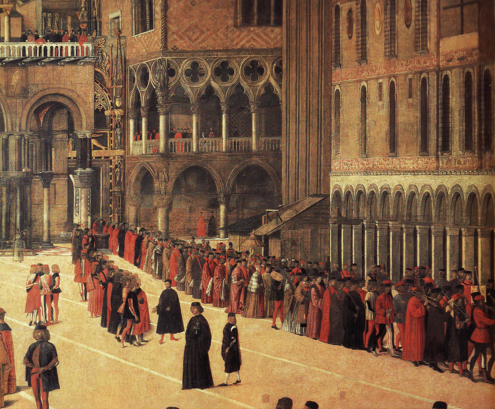
1497—Brescia, Italy: The Queen of Cyprus enters Brescia with a procession that includes an ensemble of 10 tromboni et piferi (trombones and shawms) in addition to 34 trumpeters and a group of 24 tamborini, stafeti, violete e lauti (Broder).
1506—Naples, Italy: Royal chronicler Andrés Bernáles records the following about a procession of Ferdinand and his retinue into the city of Naples: “And they passed beneath a very richly decorated arch; and on this and all the others, as well as on the bridge, just as his Highness came through, the instruments played and made great rejoicing. These included four pairs of kettledrums and twenty-six s-shaped trumpets, with infinite number of other instruments, such as shawms and sackbuts [sacabuches] etc. They made such a din [estruendo] that if a bird happened to fly past, they made it fall from the sky into the crowd” (Knighton, Ferdinand).
1526—Seville, Spain: Authorities decide to set up a permanent full-time instrumental ensemble, saying, “It would be very honourable in this holy church and in the praise of the divine worship to have on salary, for their own use, some loud minstrels, trombones [sacabuches] and shawms, to use in various of the most important feasts and the processions that the church makes…they determine and order that five loud minstrels be received into this church: three shawms (treble, tenor and contra) and two trombones, persons skilled in their art, to serve in this church…” This group constitutes the earliest known cathedral ensemble in Spain (Kreitlein, Minstrels in Spanish Churches).
1530—Lyons, France: Trombones are among those participating in a procession celebrating the return of the sons of Francis I, following the Peace of Cambrai (Dobbins, Music 105).
1533—France: The new queen, Eleanor of Austria, enters Lyons in a large procession that includes trombones (Dobbins, Music 107).
1533—England: At Anne Boleyn’s coronation celebration, an elaborate water procession on the river Thames includes a the Mayor’s barge, which carries “Shalmes, Shagbushes & divers other instruments, whiche continually made goodly armony” (Stevens, Music & Poetry 240; Whitwell, Renaissance 24).
1536—England: At a water procession, “the Kinge passed throwe London Bridge, with his trumpets blowinge before him, and shalmes and sagbuttes, and dromslawed [drummers] playing also in barges going before him” (Herbert, Trombone 96).
1539—Florence, Italy: “On the entrance of the most illustrious Duchess” at the wedding procession of Duke Cosimo I and Leonora of Toledo, Corteccia’s motet, a 8, Ingredere felicissimis auspiciis urbem tuam Helionora, is “sung over the archway of the great door of the Porta al Prato with 24 voices on one side and on the other 4 trombones and 4 cornetti” (Brown Sixteenth-Century Instrumentation, 88; Reese 366). The wedding festivities also include a madrigal performed by a female vocalist and 4 trombones; a contemporary account records, “This last act was closed by Night, dressed in a black silk veil with a blue-starred headdress, the moon above her forehead….She sang sweetly Ventien ’ almo riposo: ecco ch ’ io torno to the accompaniment of 4 trombones (Bowles, Musical Ensembles 25). In addition, at the wedding banquet in a courtyard of the Palazzo Medici, the 9 muses sing Francesco Corteccia’s motet, a 9, Sacro e santo Hymeneo. Although the muses are not described as playing instruments, they each hold one; a contemporary accound mentions, “The first [Thalia] was in a very blonde cloth, girded with a green olive branch…a trombone [trombone] in her right hand” (Brown, Sixteenth-Century Instrumentation 88; Bowles, Musical Ensembles 24; Boydell, Crumhorn 41).
1539—Germany: Martin Luther praises a church procession that includes trombones, harps, timpani, cymbals, and bells (Whitwell, Renaissance 238).
1556-59—Venice, Italy: Matteo Pagan’s Procession in St. Mark’s Square on Palm Sunday includes what appears to be an awkwardly-rendered trombone, labeled trombe piffari, among the members of the wind band (see far left of below image; public domain) (Landon 36; Fenlon, Magnificence 34; Venice, Museo Correr).
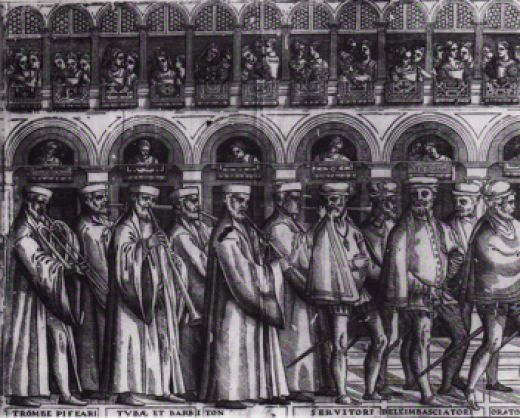
1542—Antwerp, Belgium: Tielman Susato is paid for providing the city with 2 additional trombones, “one a tenor, the other a bass, bought for the civic musicians to be used in processions and in the church with the singers during high feasts” (Polk, Susato 195). Inventory records from 1532 show that the city already owns 3 trombones (Polk, Susato 73).
1566—Florence, Italy: Wedding festivities for Prince Francesco de’ Medici and Johanna of Austria include an allegorical procession, Genealogy of the Gods, in which one of the 9 muses “marche[s] in elegant fashion” with a trombone (Bowles, Musical Ensembles 54).
1567—Florence, Italy: Three weeks of festivities celebrating the birth of a Leonora to Grand Duke Francesco de’ Medici and Princess Johanna of Austria begin with a hunt, followed by an evening pageant of hunters; a contemporary account says, “Afterwards they had sixteen musicians, some of whom sang and others who played [instruments]….The song was written on order of the Illustrious Duke by a young gentleman from our city, in the manner of our forefathers, accustomed to composing dance music….[There were] huge and amazing triumph-wagons, with all sorts of inventions….There were sixteen musicians, as I’ve said, divided as follows: the music was in six parts, composed by that excellent Francesco Corteccia: that is, all the voices doubled by the tenor out-of-doors, and accompanied and doubled by two trombones, two crumhorns and two cornetts, all of which together produced a sweet harmony” (Bowles, Musical Ensembles 57). Later there is another dramatic procession: “On the next Thursday, the twelfth of the present [month], Signor Triano Boba…continuing the entertainment with excellent musicians, ordered an outdoor masquerade [featuring] a carriage of widows, which proceeded first to His Highness and then to the noblest houses in the city, entering them to sing and play the song [Hor che vedove, e sole] written by Domenico Mellini to music composed by that excellent Alessandro Striggio, in six parts, and accompanied by two viols, two trombones, two flutes and two lutes, which produced a harmonious and most sweet harmony (Bowles, Musical Ensembles 57). The following Sunday the cardinal hosts a festival in front of the old Medici palace that includes, according to a contemporary account, “excellent musicians, some vocal and some with instruments, singing and playing the following canzona [Per questi duo guerrier famosi] with words by Scipione dale Palle, an excellent Sienese musician, and music by Stefano Rossetto, for six [voices] accompanied by two trombones, two lutes, a lira [viol], a gravecembalo, a cornett and a flute (Bowles, Music Ensembles 57). Another masquerade on the following Monday features a madrigal, Scorte dal chiaro lune, by Alessandro Striggio, “in four parts, accompanied by trombones and cornetts: that is, the first time with voices alone, unaccompanied; and the second time with instruments and voices together…the voices were doubled on [each] part; and between the singers and instrumentalists were a large number [of performers]” (Bowles, Music Ensembles 58). On the final day of the festivities, an allegorical pageant, The Triumph of Fortune, again features trombones; a contemporary account states: “[The pageant] was replete with musicians who sang and played the song [Donne poscia ch’a voi non fatte ancelle le grazie]. The [pageant-] ship symbolized the triumph of Fortune….[The song] was written by a young gentleman from Siena, with music by Steffano Rossetto, in six parts, accompanied by three trombones, two cornetts, a flute and a lira [da braccio]” (Bowles, Music Ensembles 58).
1574—Dresden, Germany: A procession for the carnival season is held at the court of Elector August of Saxony. It includes an ensemble of 8 musicians playing cornetts, shawms, and trombones; another ensemble of 8 playing lute, fiddle, flute, trombone, cornett, mandora, and shawm; and another group playing fiddles, cornetts, and trombone (Bowles, Musical Ensembles 73). Graphic representations of the event (see below 3 images) show the first and third groups in lavish robes and hats, the second with rough leggings, no shirts, and leaves in their hair (representing “wild men and women”) (Bowles, Musical Ensembles 77, 79, 80; public domain images).
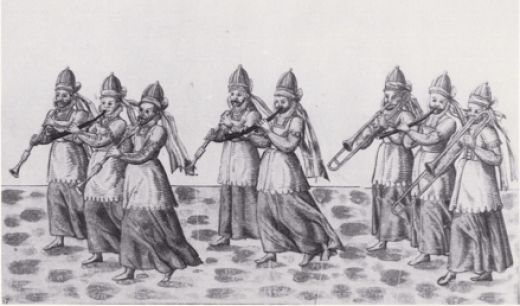
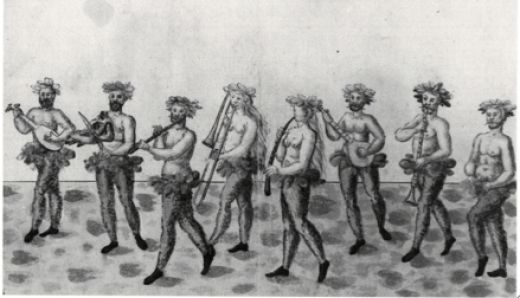
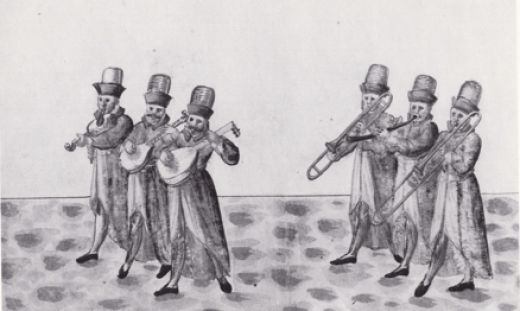
1575—Stuttgart, Germany: According to a poetic account of the marriage festival of Duke Ludwig von Württemberg and Dorothea Ursula, “There went a long procession / Of princes, counts and lords, / And there was a throng of nobles / On all sides in the hall, / Who approached here and there, / To view the princely dance. / The women also came there as well / In a long line, two-by-two….Then a sound was heard above the throng. / Trumpets and trombones blew, / And the kettledrums boomed mightily, / This (as I have heard truly tell) / There was no place in the entire city / Where [the music] could not be clearly heard” (Bowles, Musical Ensembles 61). Trombone is also mentioned in descriptions of other wedding festivities: “When [the noble guests] reached the castle / then things really got started… / In every corridor, at every corner / The instruments were heard / with music sweet as angels, / With charming sound and tone, / In artful harmony all. / And rich-sounding ensemble / of trombones [Pusaunen], loud cornetts…” During the wedding ceremony itself, “Therein the choir was heard / Singing freely with eight voices… / Thus the nuptial song resounded / With trombones and singing…” (Bowles, Musical Ensembles 103; Boydell, Crumhorn 328).
1580—Innsbruck, Austria: A procession to a tournament that is part of marriage celebrations of Johann Lipsteinsky von Kolowrat and Katharina von Boymont und Pairsberg includes a trio of dulzianand 2 trombones (see below image; public domain) (Bowles, Musical Ensembles 85, 89).
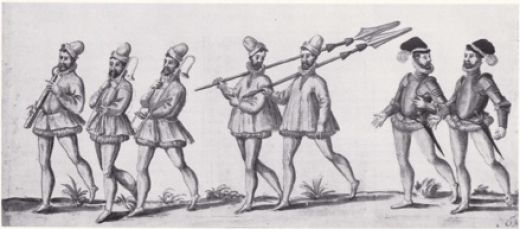
1580—Munich, Germany: A plan for a procession written by the court chancellor, Müller, mentions “where the pipe and tabour, dulcin, triangle…Quintern and trombones [Pusaunen] are also made use of as they used to be in the days of Duke Albrecht” (Boydell, Crumhorn 397).
1582—Dresden, Germany: In a procession celebrating the marriage of Christian I of Saxony, a symbolic entourage of Bacchus includes a quartet of 2 trombones, cornett, and tenor shawm (see below image; public domain) (Bowles 103-4). In the final tableau, a trombonist, one of 5 instrumentalists attired as angels, stands on a fire-breathing dragon, announcing the Last Judgment with his trombone (Bowles, Musical Ensembles 103).
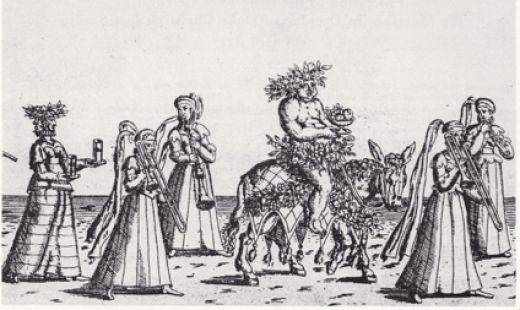
1589—Russia: Johann David Wunderer of Strassburg, Germany writes about Russian military music: “In battles and parades they use many trombones [posaunen], crumhorns, shawms and other wind instruments which are unknown in Germany” (Boydell, Crumhorn 63).
1584—Dresden, Germany: A procession during wedding festivities for Balthasar Wurm and Anton von Sahlhausen at the court of Saxony, includes 8 musicians dressed as women, playing trombone, lute, cittern, treble viol, bass recorder, tenor viol, transverse flute, and clavichord; a graphic representation of the procession shows the trombone at the head of the group (see below image; public domain). Another ensemble in the procession consists of bass recorder, cornetts, bombard, and trombones (Bowles, Musical Ensembles 105, 107).
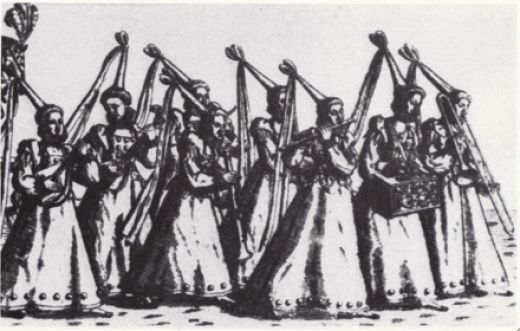
1589—Basel, Switzerland: Nicolas von Riedt includes a trombonist in his Fastnachtszug, a depiction of a carnival procession of 8 elaborately masked and costumed men (see below image; public domain) (Salmen, Musikleben im 16 80-81).
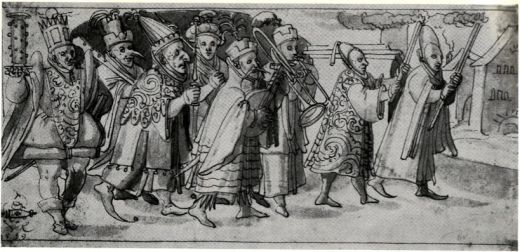
1598—Hechingen, Germany: Celebrations for the wedding of Count Johann Georg von Hohenzollern and Franziska von Wild- und Rhein feature a lengthy procession that includes an ensemble of cornett, shawm, and trombone players (Bowles, Musical Ensembles 143).
For the second part of the series (17th-19th centuries), see here:
- Trombone History: The Trombone in Parades, 17th-19th Centuries
This is the second of a two-part series on the history of the trombone in processions. For the first hub, see here. The trend in the three centuries represented below is a general movement from royal and...
